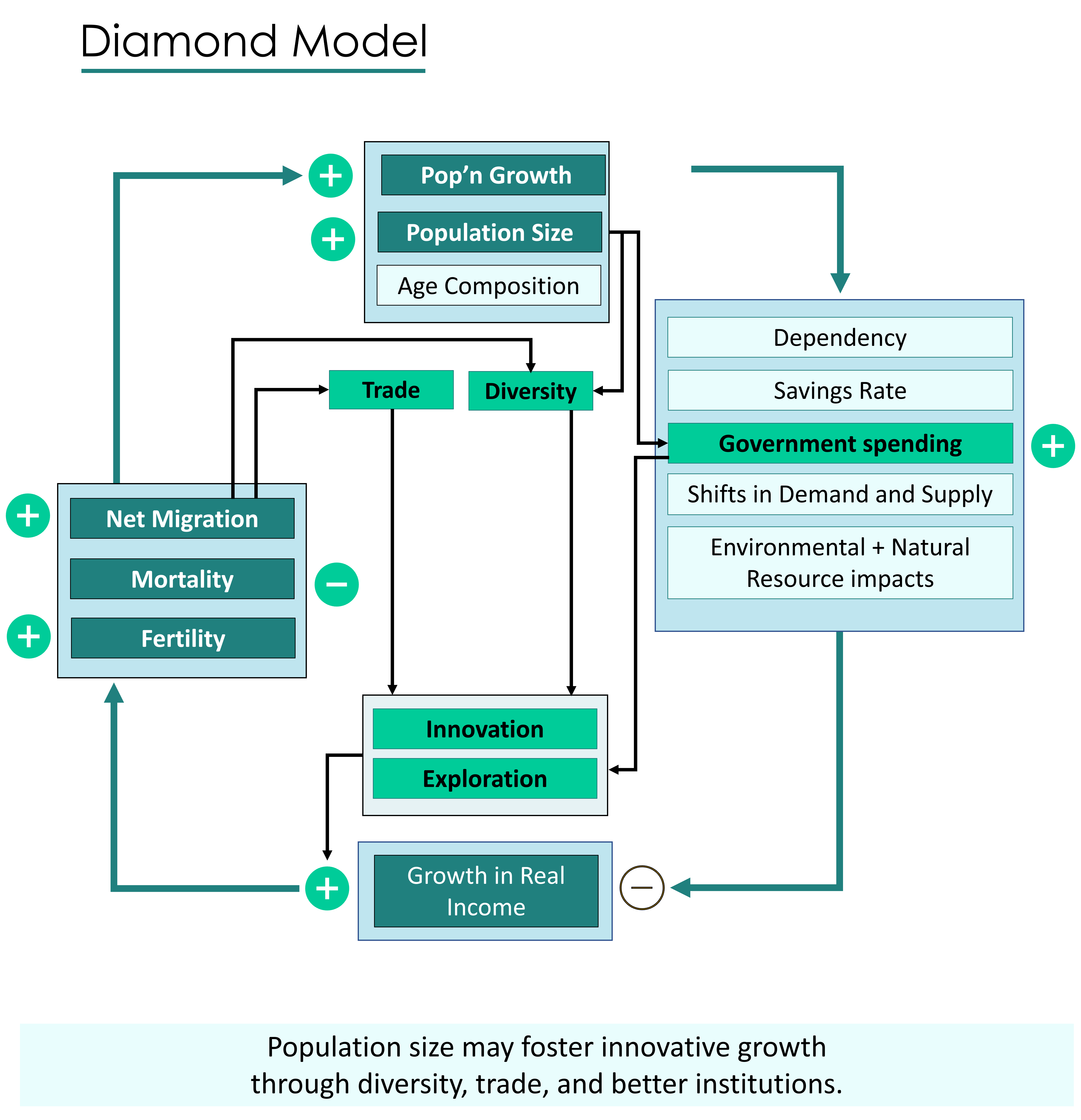Chapter 25 - Models of Economic and Demographic Change
1/7
There's no tags or description
Looks like no tags are added yet.
Name | Mastery | Learn | Test | Matching | Spaced |
|---|
No study sessions yet.
8 Terms
Disproving the Malthusian Model
Assumed that food production could grow only arithmetically.
The demographic transition was disproving the assumption that the birth rate would always rise when the standard of living improved
Ehrlich Model
Paul Ehrlich says food production has been able to keep up with population growth because we have been exploiting natural resources, environmental capital, and societies in an unsustainable way
He says at some point, we can’t do this anymore and our civilization will collpase
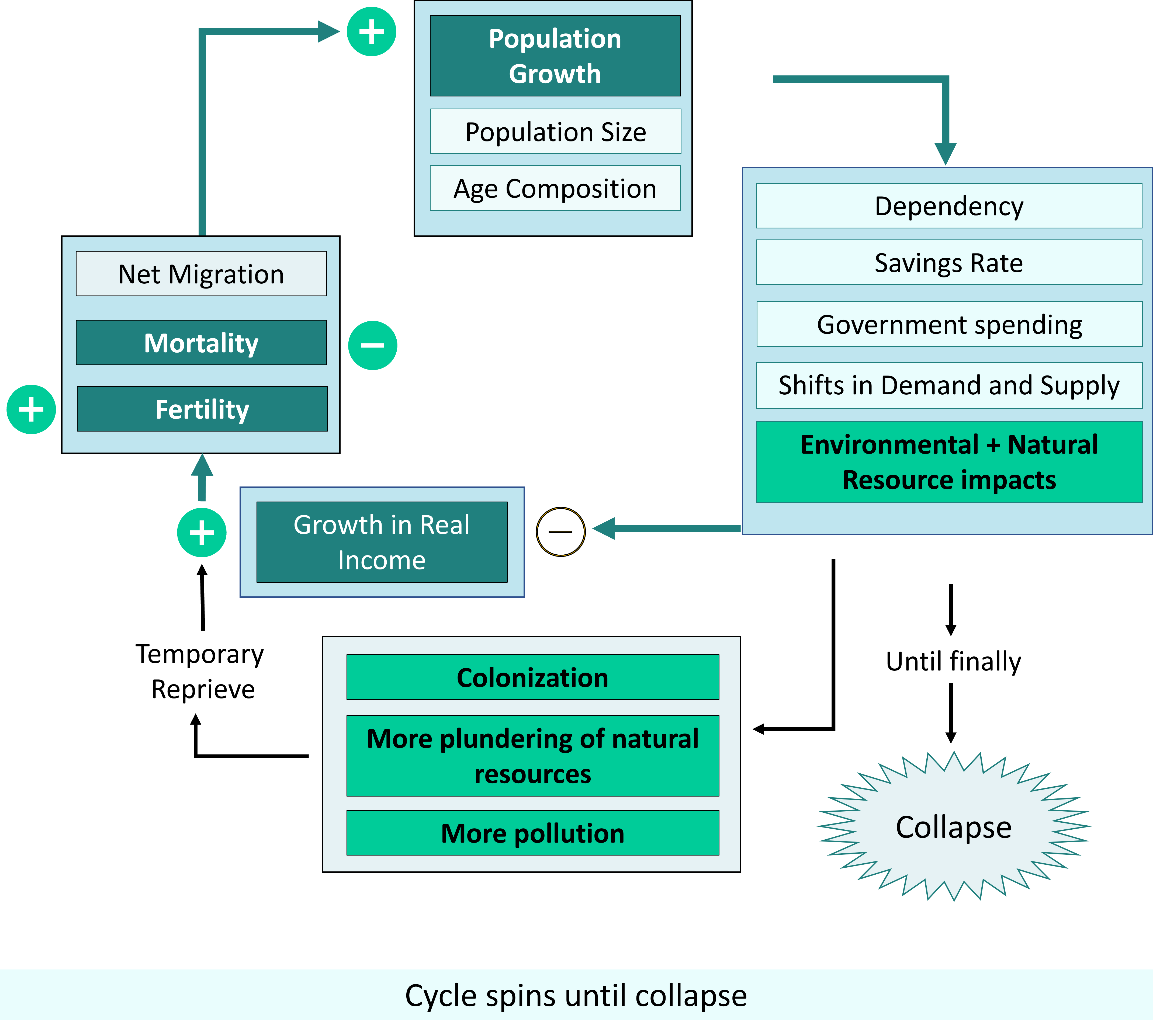
Boserup - Simon Model
As population grows, resources become more scarce and prices rise
motivate people to innovate, develop new technologies, these innovations become successful
The standard of living is rescued by technological change
presumes that all relevant resources are marketed
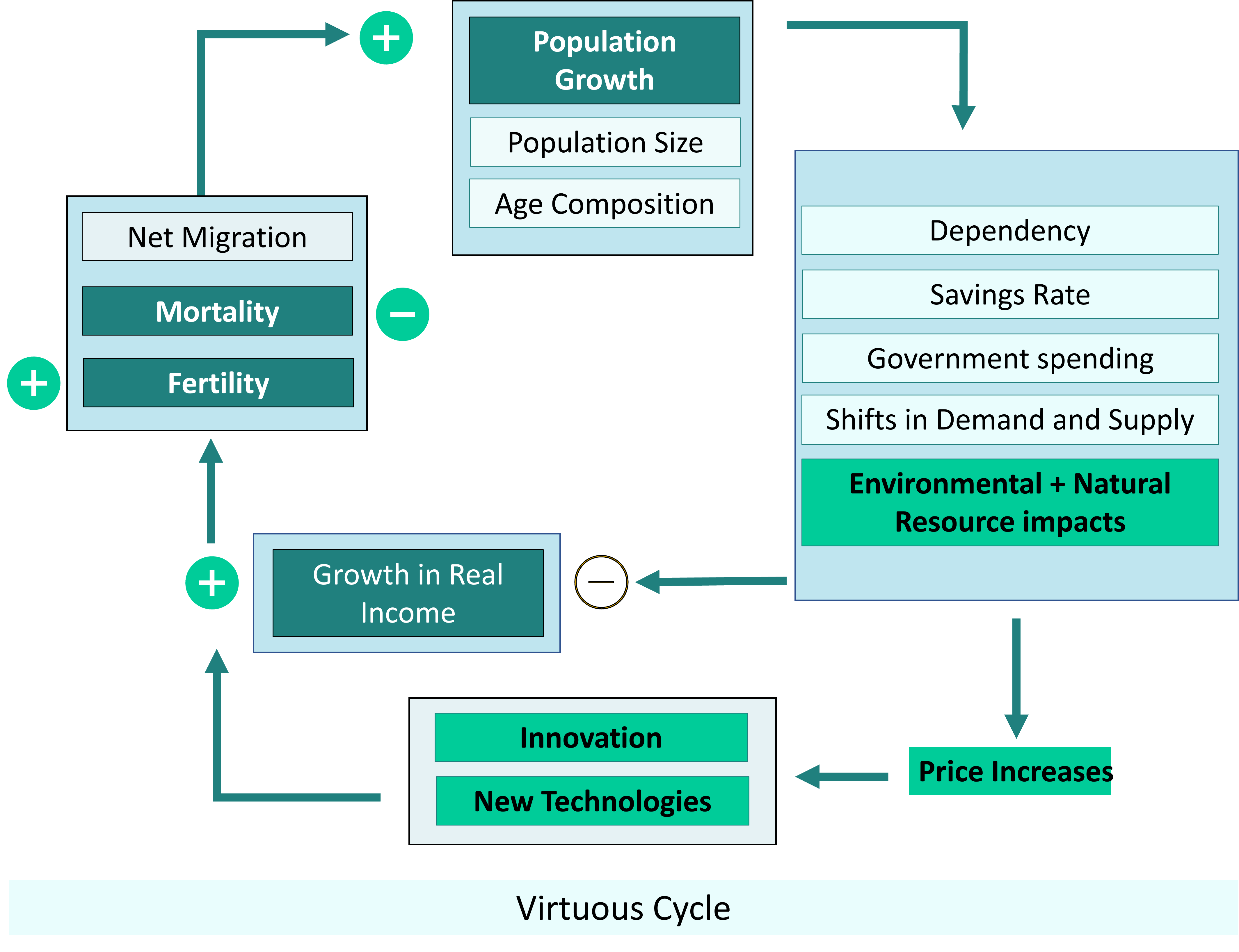
A model based on Indigenous Teachings
all beings on land exist in a relationship together
Medicine bowl model
If the population of the land is too big it will suffer
more holistic based understanding

Clark Model
when population growth leads to food scarcity and rising economic pressures, people who are literate, numerate, hard-working, and thrifty are more likely to adapt
Productivity of the economy will get better
More productive citizens have more surviving children than other citizens
He ignores that innovating activity will not be successful unless society rewards innovation
Reminds us that the composition of the population can make a difference in the economy
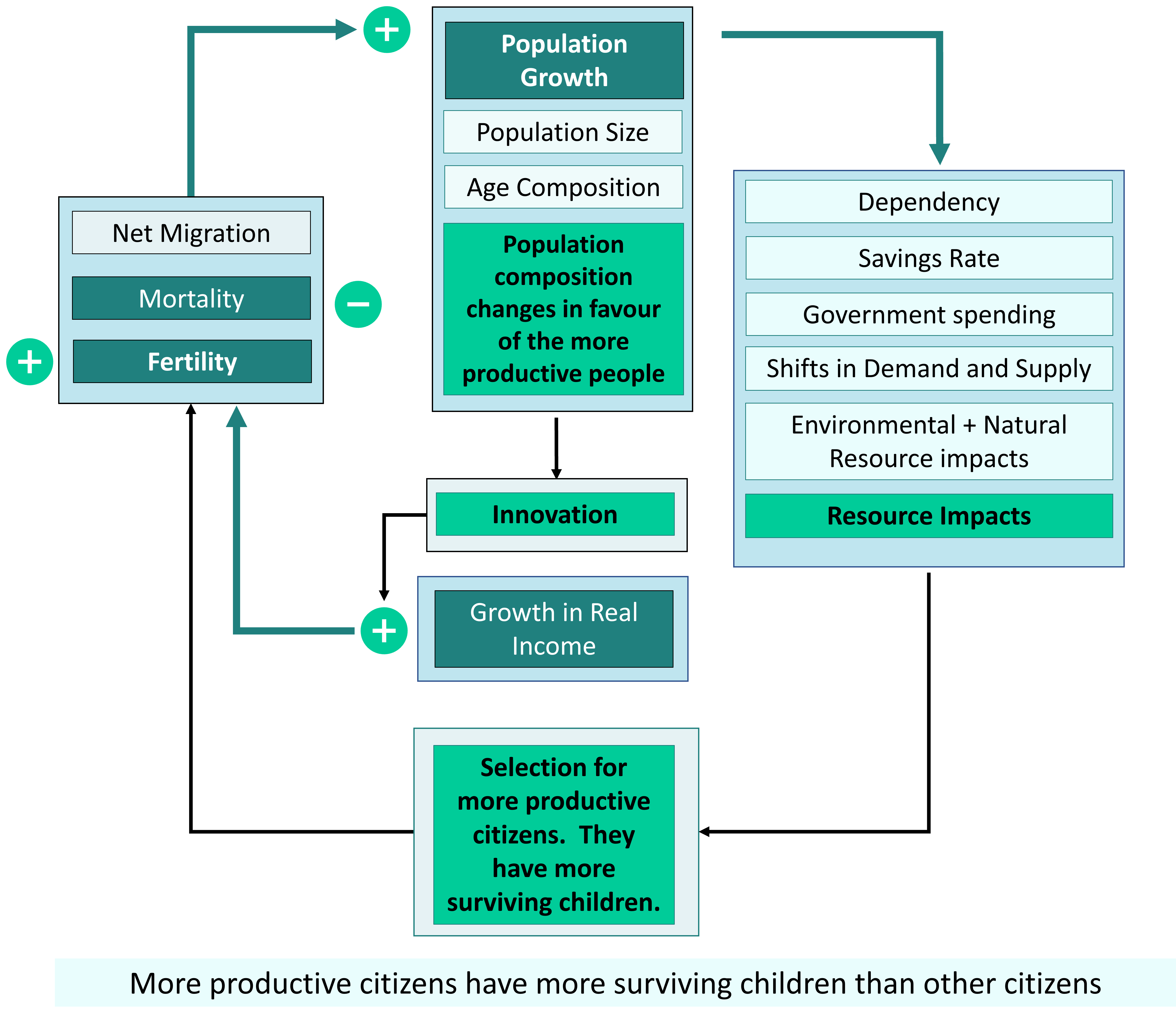
Jacob’s Model
Importance of cities for economic development
Population growth leads not only to rising prices but also to urbanization, and urbanization leads to innovation and better institutions.
Innovation arises natural in densely populated areas
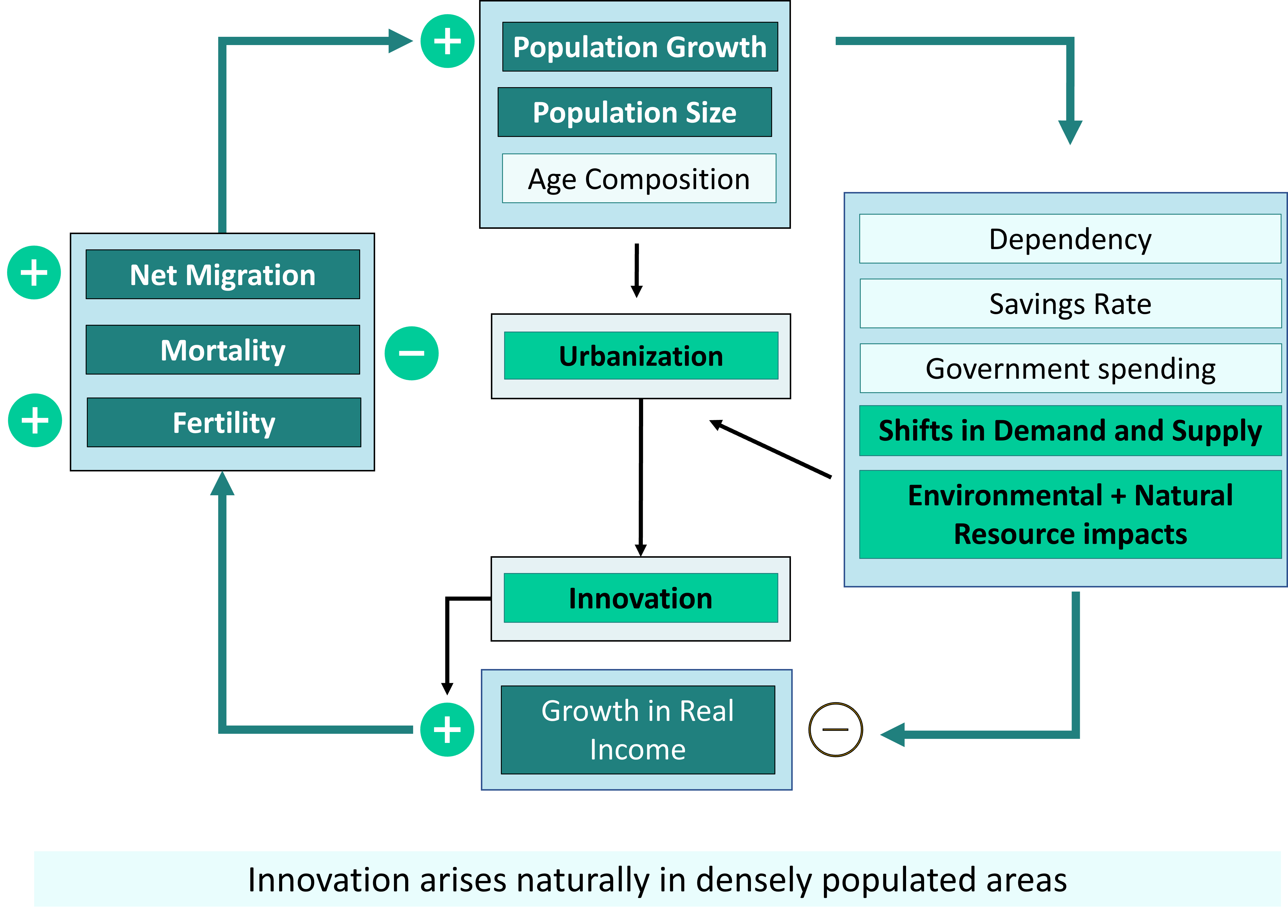
Diamond Model
Population size may foster innovative growth through diversity, trade, and better institutions
Innovations emerge as small populations become larger
Large populations have advantages over smaller ones
more military might
greater diversity of abilities and ideas
